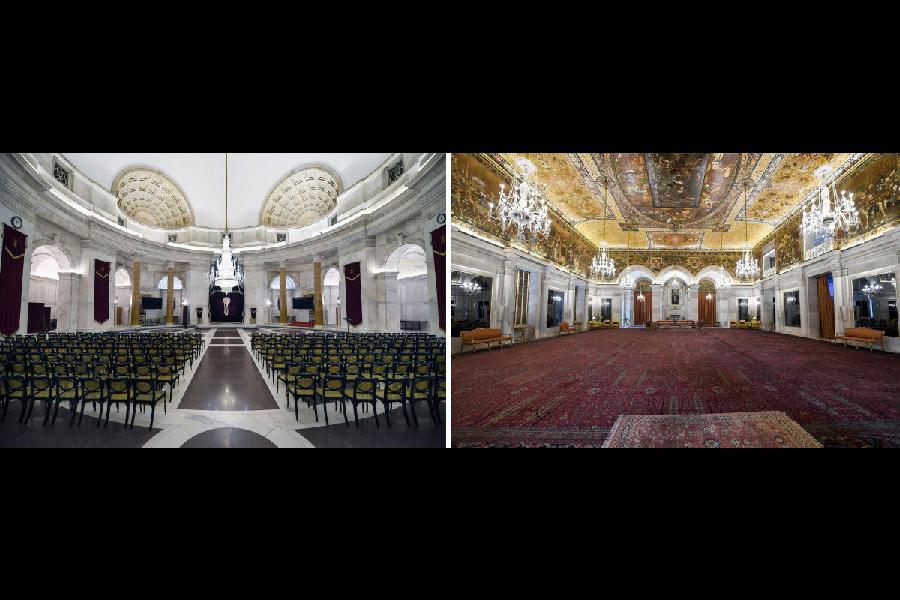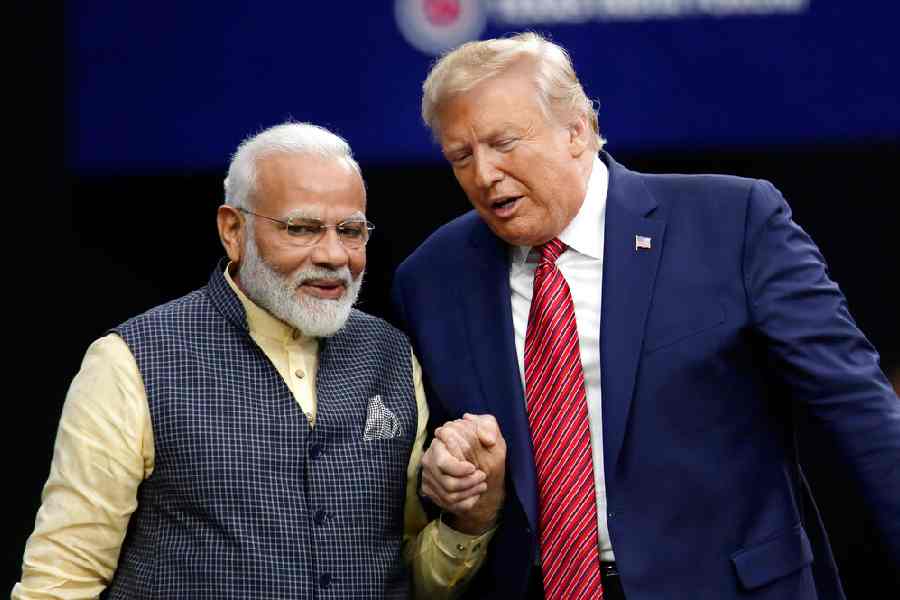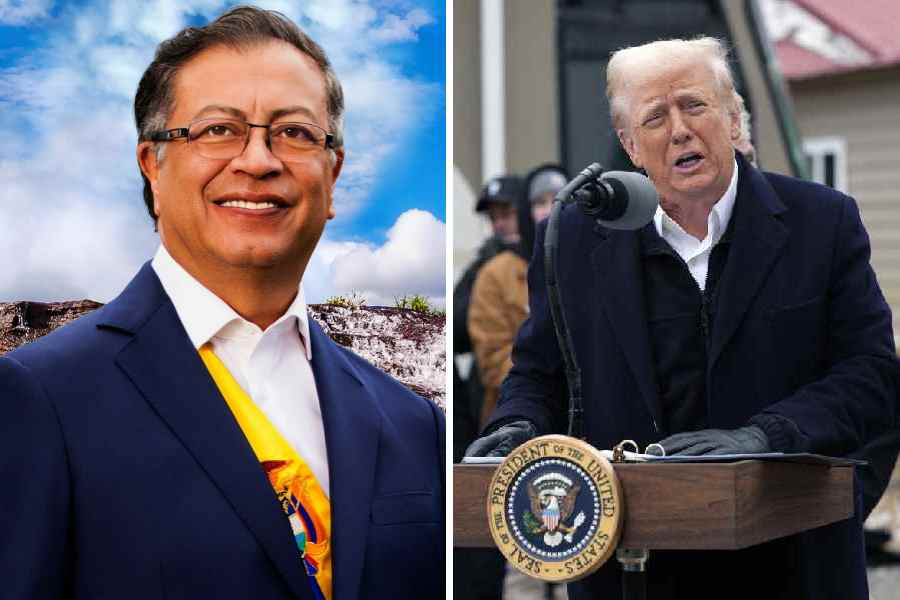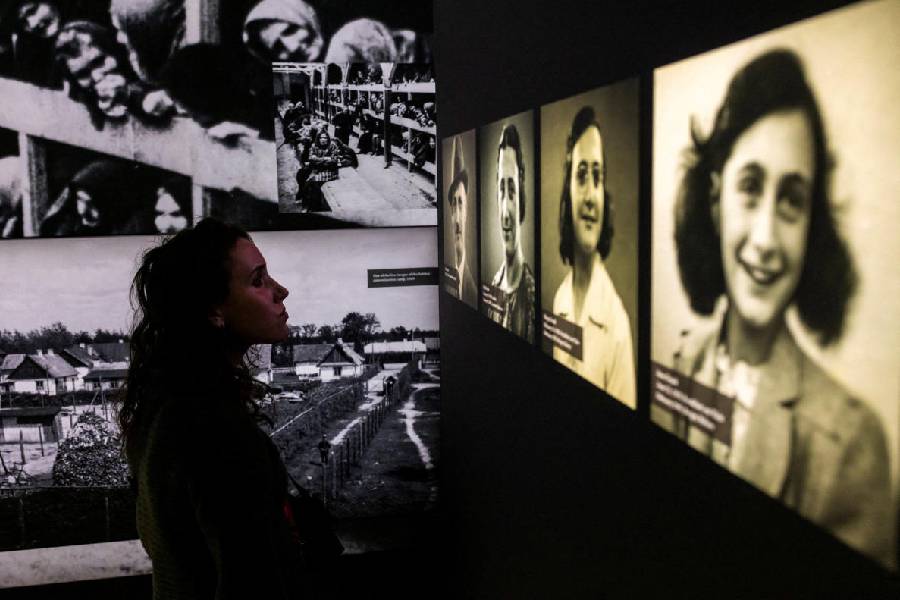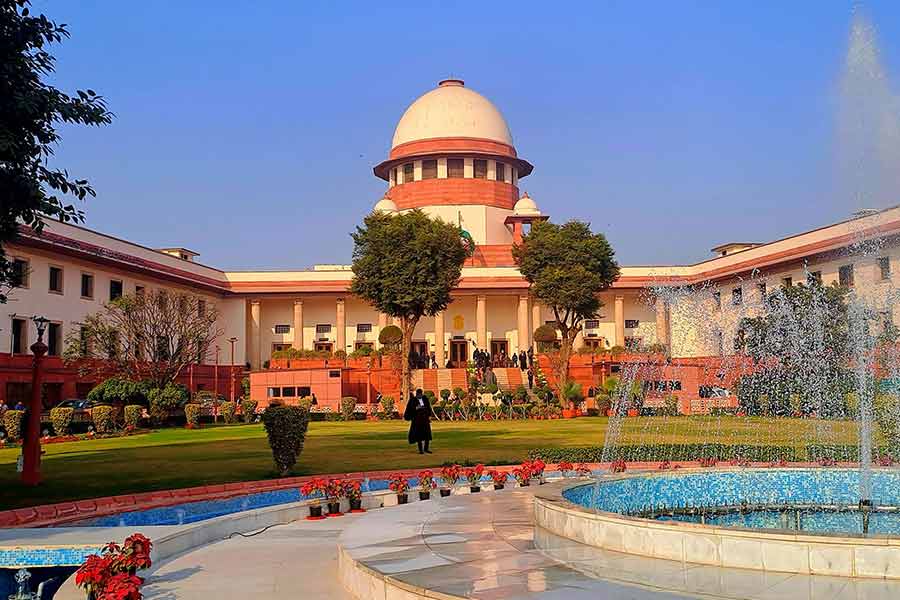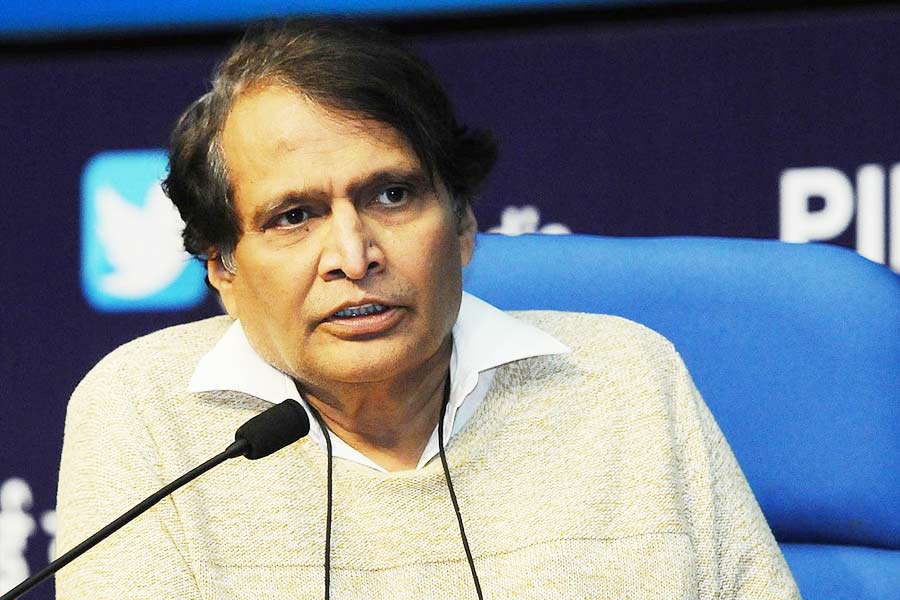The Durbar Hall and the Ashok Hall at Rashtrapati Bhavan will now be known as the Ganatantra Mandap and the Ashok Mandap, respectively, with the authorities portraying the move as a nod to India’s democratic traditions and the need to shun “anglicisation” and colonial throwbacks.
The Durbar Hall, originally known as Throne Room, was where independent India’s first government took the oath of office in 1947, and C. Rajagopalachari was sworn in as India’s first governor-general in 1948.
It was also where President Fakhruddin Ali Ahmed’s body was laid in state in 1977.
The investitures of civil and military awards, and the swearing-in of the Chief Justices of India, take place in this hall.
The Ashok Hall is used for the presentation of credentials by heads of foreign missions. It’s also the place where visiting delegations are formally introduced before banquets hosted by the President.
Rashtrapati Bhavan said in a statement: “The term ‘Durbar’ refers to courts and assemblies of Indian rulers and the British. It lost relevance after India became a Republic, that is, ‘Ganatantra’. The concept of ‘Ganatantra’ is deeply rooted in Indian society since the ancient times, making ‘Ganatantra Mandap’ an apt name for the venue.”
It added: “‘Ashok Hall’ was originally a ballroom. The word ‘Ashok’ connotes someone who is ‘free from all sufferings’ or is ‘bereft of any sorrow’. Also, ‘Ashoka’ refers to Emperor Ashok, a symbol of unity and
peaceful co-existence.
“The National Emblem of the Republic of India is the lion capital of Ashok from Sarnath. The word also refers to the Ashok tree which has deep significance in Indian religious traditions as well as arts and culture. Renaming ‘Ashoka (sic) Hall’ as ‘Ashok Mandap’ brings uniformity in language and removes the traces of anglicisation while upholding the key values associated with the word ‘Ashok’.”
Last year, the Mughal Gardens in the Presidential Estate were renamed Amrit Udyan. Rajpath, the road from Rashtrapati Bhavan to India Gate, was in 2022 renamed
as Kartavya Path.
Asked for a response to the latest name changes, Congress general secretary Priyanka Gandhi Vadra told reporters outside Parliament: “There is no (longer the) concept of a durbar but there is a concept of shahenshah (king of kings).”
During the Lok Sabha campaign, Priyanka had referred to Prime Minister Narendra Modi as “shahenshah” in retaliation to his repeated jibe of “shehzade” (prince) at her brother and Congress MP Rahul Gandhi.
The Durbar Hall has a fifth-century statue of the Buddha against a crimson velvet background. The Rashtrapati Bhavan website says: “In front of this statue is placed the President’s Chair. Earlier, two thrones were placed at this spot, one for the Viceroy and the other for the Vicereine.
“The Durbar Hall corridor displays the busts of former Indian presidents, sculpted by noted sculptors from across the country. The Marble walls of the hall have life size paintings of Mahatma Gandhi made by Venkatesh D, C. Rajagopalachari made by Biren De, Shri Jawaharlal Nehru made by Gerasimov and Dr Rajendra Prasad made by J.A. Lalkaka. Six tall banners in deep red with the National Emblem of India in gold also adorn the Durbar Hall.”
The Ashok Hall has several pieces of art. The website says: “The centre of the ceiling has a leather painting showing an equestrian portrait of Fath Ali Shah, the second of seven Qajar rulers of Persia, hunting a tiger in the presence of his twenty-two sons.
“This painting, which is measured at 5.20 metres in length and 3.56 metres in breadth, was gifted to George IV of England by Fath Shah himself....”

